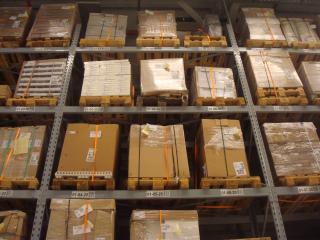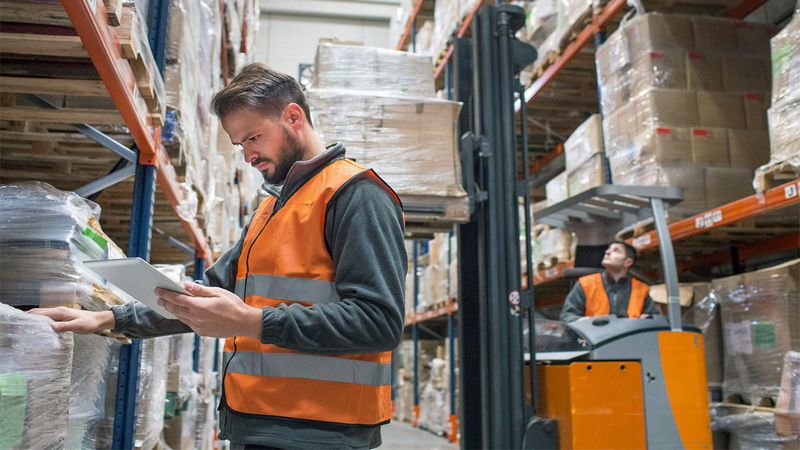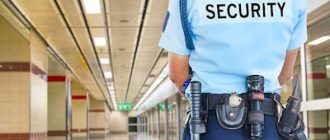
What kind of security can be provided in a warehouse
Warehouse security is crucial for any business that deals with the storage and distribution of goods. The proper monitoring and protection of a warehouse can prevent theft, damage, and unauthorized access. In this article, we will explore different types of security measures that can be implemented to ensure the safety of your goods.
One of the primary types of warehouse security is the use of alarms and surveillance systems. These systems can detect any suspicious activity and alert the authorities. Surveillance cameras placed strategically can provide continuous monitoring of the premises, capturing any potential threats.
Fencing and access control are additional layers of security that can be implemented in a warehouse. Barbed wire fencing or high walls can deter trespassers, making it difficult for unauthorized individuals to gain access. Access control systems such as keycard readers or biometric scanners can ensure that only authorized personnel enter the warehouse.
Another important aspect of warehouse security is the careful monitoring of the inventory. Implementing an inventory management system can help keep track of the goods stored in the warehouse, ensuring that nothing goes missing. Regular inventory audits and reconciliations can also help identify any discrepancies or potential security breaches.
In conclusion, the security of a warehouse is of utmost importance to keep your goods safe and protected. By implementing measures such as alarm systems, surveillance cameras, fencing, access control, and inventory monitoring, you can ensure that your warehouse remains secure and free from any potential threats.
Types of Warehouse Security
When it comes to protecting your valuable goods and inventory, having the right security measures in place is crucial. Warehouse security involves various systems and procedures to ensure the safety and protection of your assets. Here are some of the common types of warehouse security:
Monitoring and Surveillance: Implementing a comprehensive monitoring and surveillance system is essential for warehouse security. This includes the use of CCTV cameras strategically placed throughout the facility to monitor activities and identify any suspicious behavior.
Fencing: Installing a sturdy and secure perimeter fence around the warehouse is an effective way to deter unauthorized access. Fencing acts as a physical barrier that prevents intruders from easily entering the premises.
Alarm Systems: Alarm systems play a vital role in warehouse security by alerting the authorities and the warehouse management team in case of any unauthorized entry or emergency situation. These systems are typically connected to a central monitoring station for quick response.
Guards: Hiring professional security guards can provide an added layer of protection for warehouses. These guards are trained to detect and prevent theft, vandalism, or any other security breaches. They can also monitor the premises and respond to incidents promptly.
Access Control: Controlling and monitoring access to a warehouse is crucial for security. This can be achieved through various methods such as keycard systems, biometric scanners, or security codes. Limiting access to authorized personnel only helps minimize the risk of unauthorized individuals entering the facility.
In conclusion, implementing these types of warehouse security measures ensures the protection and safety of your goods and inventory. By combining monitoring and surveillance, fencing, alarm systems, guards, and access control, you can create a comprehensive security plan for your warehouse.
Alarm systems for warehouses
An effective alarm system is a crucial component of warehouse security. It plays a significant role in the protection of goods, ensuring their safety and preventing theft or unauthorized access.
The alarm system acts as a guard, providing round-the-clock security for the warehouse. It is designed to detect any suspicious activity or breach of security and raise an alarm to alert the authorities or security personnel.
There are various types of alarm systems available for warehouses. These include:
1. Intrusion alarms: These alarms are installed at entry points, such as doors and windows, to detect any unauthorized access or forced entry. They trigger an alarm when the security of the warehouse is compromised.
2. Motion sensors: These sensors are strategically placed throughout the warehouse, and they detect any movement. If there is any motion detected within the restricted area, an alarm is triggered to indicate potential security threats.
3. Glass break sensors: These sensors are designed to detect the sound of breaking glass. They are typically installed near windows or glass doors to prevent break-ins. If the sound of glass breaking is detected, an immediate alarm is raised.
4. Smoke and fire alarms: These alarms are essential for warehouse safety as they detect smoke and fire. They provide early warnings, allowing personnel to evacuate and the fire department to respond promptly.
5. Surveillance cameras and alarms: Surveillance cameras are often integrated with alarm systems to provide visual monitoring of the warehouse. In case of any suspicious activity, an alarm is triggered, and the security personnel can respond accordingly.
In conclusion, the installation of a comprehensive alarm system is vital for warehouse security. It ensures the protection of goods by detecting and alerting any breach in security, unauthorized access, or potential threats. Combined with other security measures, such as access control and personnel monitoring, alarm systems contribute to a secure and well-protected warehouse environment.
Video surveillance in warehouses
Video surveillance is a key component of ensuring the security and protection of goods in warehouses. It serves as an additional layer of defense alongside security guards, monitoring systems, and alarm systems.
Video surveillance systems provide real-time monitoring and recording capabilities, allowing warehouse owners to keep an eye on the activities happening inside and outside the facility. This allows for quick response in case of any security breaches or emergencies.
The main purpose of video surveillance in warehouses is to deter potential criminals and provide evidence in case of theft or damage. The presence of cameras acts as a deterrent, reducing the risk of break-ins and unauthorized access.
Warehouse video surveillance systems typically consist of a network of high-definition cameras strategically placed throughout the facility. These cameras capture and record footage that can be monitored live and reviewed later if needed.
To further enhance security, warehouses often implement motion detection and analytics software in their video surveillance systems. This helps in detecting unusual activities or movements, triggering alarms and notifying security personnel in case of any suspicious behavior.
Video surveillance systems can also be integrated with other security measures such as access control systems and fencing. This provides a comprehensive security solution, ensuring that only authorized personnel have access to the warehouse.
| 1. Deterrence of theft and criminal activities |
| 2. Real-time monitoring and quick response |
| 3. Evidence collection for investigations |
| 4. Integration with other security measures |
In conclusion, video surveillance in warehouses plays a crucial role in ensuring the security and protection of goods. It acts as a deterrent, provides real-time monitoring, and aids investigations in case of any security breaches. By implementing a comprehensive video surveillance system, warehouse owners can enhance the overall security of their facilities.
Access control systems for warehouses
Access control systems play a critical role in ensuring the security and protection of goods stored in warehouses. These systems help to enforce authorized access and prevent unauthorized entry into the premises.
One common access control measure used in warehouses is fencing. Erecting a sturdy fence around the perimeter of the warehouse helps to deter unauthorized individuals from gaining access to the premises. Fences can be equipped with additional security features such as barbed wire or electric currents to further enhance the level of protection.
Surveillance cameras and alarm systems also form an essential part of access control systems. Strategic placement of surveillance cameras enables continuous monitoring of the warehouse facility, providing real-time video footage of any suspicious activities. In the event of a breach, alarm systems can immediately alert security personnel to take necessary action.
Monitoring access to the warehouse through identification systems and keys is another component of access control systems. This can involve the use of electronic key cards, biometric scanners, or PIN codes to grant entry to authorized personnel only. By limiting access through these means, the risk of theft or damage to goods is significantly reduced.
Security guards can play a vital role in access control systems for warehouses. They can act as the first line of defense against unauthorized entry, patrol the premises, and respond promptly to any security breaches or emergencies. The presence of security guards can deter potential intruders and provide an added layer of protection.
Overall, access control systems are essential for maintaining the security and integrity of warehouses. By implementing measures such as fencing, surveillance, alarms, monitoring, and security guards, warehouses can ensure that only authorized individuals are granted access and that goods are protected from theft or damage.
Security personnel for warehouses
When it comes to providing effective surveillance and protection for a warehouse, having security personnel is crucial. These professionals play a vital role in ensuring the safety and security of the warehouse and its contents.
A security guard stationed at the warehouse can actively monitor the premises and detect any suspicious activity or unauthorized access. They are trained to identify potential threats and take appropriate action, such as sounding an alarm or notifying the authorities.
Security personnel are responsible for carrying out regular patrols of the warehouse, both inside and outside. This helps to deter potential thieves or vandals from targeting the facility. They can also conduct thorough inspections of the warehouse’s perimeter, checking for any weaknesses in fencing or barriers that could allow unauthorized access.
Another important role of security personnel is controlling access to the warehouse. They can enforce strict entry procedures and verify the identity of individuals entering or leaving the premises. This helps to prevent unauthorized personnel from gaining access to sensitive areas or valuable inventory.
In addition to providing physical security, security personnel can also offer valuable assistance during emergency situations. They are trained to respond quickly and effectively to incidents such as fires, accidents, or natural disasters. Their presence can help to ensure that emergency protocols are followed, minimizing the potential damage or loss.
In conclusion, security personnel are an essential part of warehouse security. Their presence provides a visible deterrent to potential threats and helps to maintain a secure environment for the warehouse and its contents. Whether it’s monitoring, patrolling, controlling access, or responding to emergencies, security personnel play a vital role in ensuring the overall safety and security of the warehouse.
Security lighting for warehouses
When it comes to ensuring the security and protection of your goods in a warehouse, security lighting plays a critical role. Adequate lighting not only deters potential intruders, but also helps employees and security personnel have better visibility, making it easier to monitor access points and detect any suspicious activities.
One important aspect of security lighting is its strategic placement. Illuminating the perimeter of the warehouse, including access points such as doors and windows, helps to deter potential intruders and discourages unauthorized access. Additionally, lighting up the exterior areas such as parking lots and loading docks adds an extra layer of security.
Choosing the right type of lighting is also crucial. High-intensity discharge (HID) lighting, such as metal halide or high-pressure sodium lamps, is commonly used for warehouse security. These lights are bright and provide a wide coverage area, ensuring that the entire warehouse and its surroundings are well-lit.
Furthermore, integrating security lighting with surveillance systems and alarms enhances the overall security of the warehouse. Motion sensor lights can be installed in specific areas where security is a concern, and they automatically turn on when motion is detected. This not only alerts security personnel but also scares away potential intruders.
Regular maintenance and inspection of security lighting is essential to ensure its proper functioning. Burned-out bulbs should be replaced promptly, and any damaged or malfunctioning fixtures should be repaired or replaced. Additionally, it is important to periodically assess the overall effectiveness of the lighting system to identify any potential vulnerabilities.
In conclusion, security lighting is an essential component of warehouse security. By strategically placing and maintaining adequate lighting, you can enhance the overall security measures, deter potential intruders, and ensure the protection of your goods. Combined with other security measures such as access control, alarm systems, fencing, and surveillance, security lighting plays a vital role in safeguarding your warehouse.
GPS tracking for warehouse vehicles
One effective measure to ensure the protection of goods in a warehouse is to implement GPS tracking for warehouse vehicles. With GPS tracking, the location of the vehicles can be monitored in real-time, allowing for enhanced security and control.
The GPS tracking system can be integrated with the warehouse’s security system, providing an extra layer of protection. By tracking the movement of vehicles, any unauthorized access or suspicious activity can be detected promptly.
In addition to enhancing security, GPS tracking also aids in managing the warehouse’s operations more efficiently. The system can provide accurate information regarding the location and status of each vehicle, allowing for better coordination and allocation of resources.
The GPS tracking system can also assist in securing the warehouse premises. By setting up geofences and establishing restricted areas, the system can automatically alert security personnel if a vehicle enters an unauthorized zone.
Furthermore, GPS tracking can enable real-time surveillance and monitoring of vehicle activities. This includes monitoring speed, route deviations, and idle times, which can help identify any potential security risks or inefficiencies.
By implementing GPS tracking for warehouse vehicles, a comprehensive and robust warehouse security system can be established. It not only enhances the protection of goods but also provides valuable insights for optimizing operations and ensuring the overall efficiency and security of the warehouse.
Fire prevention measures for warehouses
Protecting a warehouse from fire is of utmost importance to ensure the safety of the goods stored within. Implementing fire prevention measures is crucial to minimize the risk of fire and reduce potential damage. Here are some key measures to consider:
|
Monitoring: Install fire detection and monitoring systems throughout the warehouse. These systems should include smoke detectors, heat detectors, and fire alarms that are connected to a central control panel. Regularly inspect and test these systems to ensure they are functioning properly. |
|
Access control: Control the access to the warehouse to prevent unauthorized entry. Limiting the number of entrances and implementing access control systems such as key cards or biometric systems can help ensure only authorized personnel are allowed inside. This reduces the risk of accidental fires caused by outsiders. |
|
Fencing: Secure the perimeter of the warehouse with fencing to deter trespassing and unauthorized access. Choose durable and fire-resistant fencing materials to provide an additional layer of protection against fire hazards. |
|
Protection systems: Install fire protection systems such as sprinklers, fire extinguishers, and fire-resistant materials in the warehouse. Regularly inspect and maintain these systems to ensure they are in working order. Provide proper training to employees on how to use fire extinguishers effectively. |
|
Security and surveillance: Implement a comprehensive security and surveillance system in the warehouse. This can include CCTV cameras, motion sensors, and access logs. Regularly review surveillance footage and monitor the warehouse to detect any signs of potential fire hazards or suspicious activities. |
|
Warehouse layout: Design the warehouse layout in a way that minimizes fire risks. Ensure clear aisle space for easy movement and access to fire-fighting equipment. Keep flammable materials properly stored and separated from potential ignition sources. |
|
Alarm systems: Install a reliable and effective fire alarm system that can alert occupants and emergency services in case of a fire. Regularly test and maintain the alarm system to ensure its functionality. |
By implementing these fire prevention measures, warehouse owners and managers can significantly reduce the risk of fire and protect the valuable goods stored within.
Inventory management systems for warehouses
Warehouse security is of utmost importance to ensure the protection of goods stored within. Access control is a key aspect of securing a warehouse, and inventory management systems play a crucial role in this regard.
Inventory management systems provide a comprehensive solution for controlling access to the warehouse. These systems allow warehouse managers to monitor and manage inventory levels, track stock movements, and ensure proper allocation of goods. By implementing an inventory management system, warehouse administrators can restrict access to authorized personnel only, enhancing the overall security of the facility.
In addition to access control, inventory management systems also provide monitoring and alarm features. These systems can be integrated with security cameras and sensors to provide real-time surveillance of the warehouse. In the event of any suspicious activity or unauthorized access, the system can automatically trigger an alarm, alerting security personnel to the potential threat.
Physical security measures, such as fencing and security guards, are also essential for warehouse protection. However, a robust inventory management system complements these measures by providing an additional layer of security. The system allows for constant monitoring, ensuring that any security breaches are detected and addressed promptly.
Overall, inventory management systems are an integral part of warehouse security. They provide access control, monitoring, and alarm features that enhance the overall protection of goods stored within the facility. By implementing a comprehensive inventory management system, warehouse administrators can ensure the security and safety of their valuable inventory.
Intrusion detection systems for warehouses
Ensuring the security and protection of goods stored in a warehouse is of utmost importance. One key component of warehouse security is the use of intrusion detection systems (IDS). IDS help monitor and detect any unauthorized access or intrusion attempts, allowing for timely response and prevention of theft or damage.
There are various types of intrusion detection systems that can be implemented in warehouses:
- Fencing: Installing a secure perimeter fence around the warehouse can act as a deterrent and provide an initial layer of protection against unauthorized access.
- Alarm systems: Equipping the warehouse with alarm systems that are triggered by unauthorized entry or tampering can alert security personnel or law enforcement agencies.
- Access control: Implementing access control measures such as keycards or biometric scanners can ensure that only authorized personnel have entry into designated areas of the warehouse.
- Guards: Having security guards stationed at entry points and key areas of the warehouse can provide an extra level of surveillance and deter potential intruders.
- Surveillance cameras: Installing surveillance cameras throughout the warehouse can help monitor activities and provide evidence in case of any security breaches.
By combining these intrusion detection systems, warehouses can greatly enhance their security measures and protect their goods from theft or damage. Regular maintenance and testing of IDS is essential to ensure their effectiveness and minimize false alarms.
Security gates and fences for warehouses
Security gates and fences are essential components of a comprehensive warehouse security system. They serve as a first line of defense, preventing unauthorized access to the warehouse premises and protecting valuable goods and assets.
A security gate acts as a guard, controlling the entry and exit points of the warehouse. It is typically equipped with access control systems, such as keypads or card readers, to ensure only authorized personnel can enter. Some advanced security gates may also incorporate biometric technology, such as fingerprint scanners, for enhanced protection.
In addition to access control, security gates often have monitoring and surveillance capabilities. They can be equipped with video cameras and motion sensors, allowing real-time monitoring of the warehouse entrance. This not only deters potential intruders but also provides evidence in the event of a security breach.
Fencing is another crucial element of warehouse security. A strong and secure perimeter fence acts as a physical barrier, preventing unauthorized entry and deterring potential intruders. The height and design of the fence should be carefully considered to ensure maximum protection.
Some warehouse fences are also equipped with alarm systems. These alarms can be triggered by unauthorized attempts to breach the fence, sending an alert to security personnel or triggering other security measures, such as activating cameras or locking down certain areas of the warehouse.
Overall, security gates and fences play a vital role in ensuring the protection of a warehouse and its contents. By effectively controlling access and providing physical barriers, they act as a deterrent and create a secure environment for goods and assets.
Security seals for warehouse packages
Security seals are an essential component of warehouse security, providing an additional layer of protection for goods stored within the facility. These seals are designed to prevent unauthorized access to packages and alert warehouse personnel in the event of tampering or theft.
One type of security seal commonly used in warehouses is the alarm seal. These seals are equipped with an audible alarm that is triggered if the seal is tampered with or broken. The alarm serves as a deterrent to potential thieves and also alerts warehouse staff to potential security breaches.
In addition to alarm seals, warehouse packages can also be secured with tamper-evident seals. These seals are designed to leave a visible mark or indication if they are tampered with, making it easy to detect any unauthorized access to packages. This provides an extra level of security and ensures that any tampering can be identified and addressed promptly.
Warehouse security can also be enhanced through the use of fencing and monitoring systems. Fencing around the warehouse perimeter helps to prevent unauthorized access, while surveillance cameras and other monitoring equipment can provide constant monitoring and recording of activities within the warehouse.
Access control measures, such as ID card systems or biometric verification, can further enhance warehouse security by restricting entry to authorized personnel. Additionally, having security guards on-site can provide a physical presence and immediate response to any potential security threats.
Ensuring the protection of goods stored within a warehouse is essential for any business. Implementing various security measures, including security seals, fencing, monitoring systems, access control, and security guards, can help minimize the risk of theft or tampering and provide peace of mind for warehouse owners and operators.
Biometric authentication for warehouses
In order to provide an enhanced level of security for warehouses, biometric authentication systems can be implemented. These systems utilize unique physiological or behavioral characteristics of individuals to grant access to authorized personnel.
One of the most commonly used biometric authentication methods is fingerprint recognition. By capturing and analyzing an individual’s fingerprint, warehouses can ensure that only authorized personnel are allowed entry. This can prevent unauthorized access and protect the goods stored within the warehouse.
Biometric authentication systems can also utilize other types of biometric data, such as facial recognition or iris scanning. By analyzing unique facial features or patterns in the iris, warehouses can further enhance security measures and ensure that only authorized individuals are granted access.
The implementation of biometric authentication systems in warehouses can provide numerous benefits. Firstly, it eliminates the need for traditional forms of identification, such as ID badges or access cards, which can be lost or stolen. This reduces the risk of unauthorized individuals gaining access to the warehouse.
In addition, biometric authentication systems can provide real-time monitoring and surveillance. This allows warehouses to closely monitor who enters and exits the facility, as well as track the movements of authorized personnel. Any suspicious activity can be quickly detected and appropriate security measures can be taken.
To further enhance security, biometric authentication systems can be integrated with other security measures, such as security cameras, alarms, and fencing. This creates a comprehensive security system that provides maximum protection for the warehouse and its contents.
| Prevents unauthorized access |
| Eliminates the need for traditional forms of identification |
| Provides real-time monitoring and surveillance |
| Enhances overall security measures |
Q&A:
What are the different types of warehouse security?
There are several types of warehouse security measures that can be used to ensure the protection of goods. These include physical security measures such as security guards, access control systems, and surveillance cameras. Additionally, there are technology-based security measures such as alarm systems, motion sensors, and biometric authentication. It is also important to have proper inventory management systems in place to track and monitor the movement of goods within the warehouse.
How can security guards ensure the protection of goods in a warehouse?
Security guards play a crucial role in ensuring the protection of goods in a warehouse. They can patrol the premises, monitor access points, and respond to any suspicious activities or incidents. Security guards can also enforce security protocols, such as checking identification and preventing unauthorized entry. Their presence alone can act as a deterrent for potential criminals, thereby reducing the risk of theft and damage to goods.
What is the role of access control systems in warehouse security?
Access control systems play a vital role in warehouse security by regulating who can enter and exit the premises. These systems use various methods such as key cards, biometric authentication, or PIN codes to grant or deny access to individuals. By implementing access control systems, warehouse owners can ensure that only authorized personnel can enter restricted areas where valuable goods are stored. It helps prevent theft, sabotage, and unauthorized access, thus enhancing the overall security of the warehouse.
Why is inventory management important for warehouse security?
Inventory management is crucial for warehouse security because it helps track and monitor the movement of goods within the facility. With an effective inventory management system in place, warehouse owners can quickly identify any discrepancies or missing items. This enables them to take immediate action and investigate the cause of the issue. By having complete visibility over the inventory, warehouse owners can better protect their goods and ensure that everything is accounted for, reducing the risk of theft or loss.







